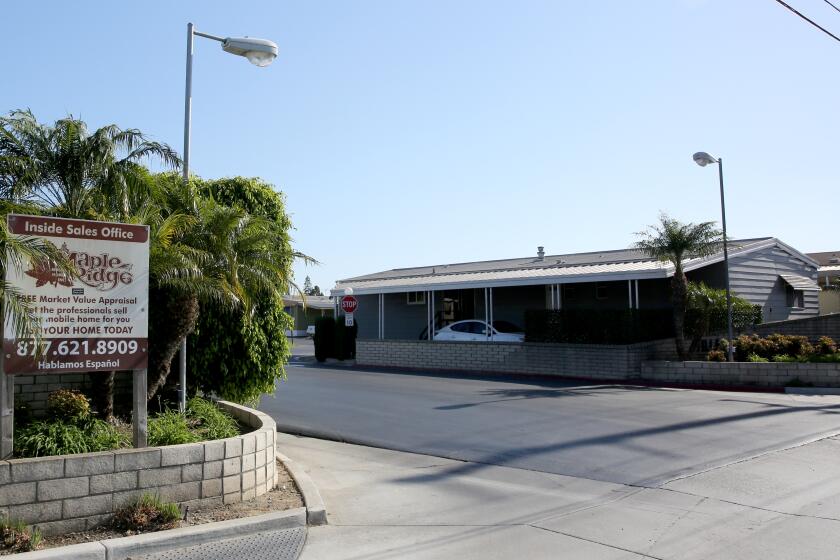First half of land-use plan approved
- Share via
City Council has six months to adopt outline for development; Coastal Commission must still accept enforcement rules.The city of Newport Beach on Thursday overcame one huge hurdle in creating a state-required local coastal plan, but the work isn’t over yet.
The California Coastal Commission unanimously approved the land-use portion of Newport Beach’s local coastal plan at a Thursday meeting in San Diego. Environmentalists cheered the decision because the commission agreed with its staff rather than the city on two disputed items -- how to define wetlands and how far to set back buildings from coastal bluffs.
“We accepted those modifications,” Newport Beach Assistant City Manager Sharon Wood said. “We studied them some more and decided that it’s something we can live with.”
As the commission approved it, the plan will require buildings on coastal bluffs in Dover Shores, Shorecliffs and other neighborhoods to be set back 25 feet from the bluff’s edge. The city wanted to use the setbacks of existing development as a guide rather than a strict 25 feet.
But the 25-foot rule won’t be absolute.
“People can apply for exceptions to it, which the Coastal Commission itself has approved,” Wood said.
The city and the commission also disagreed on what to do if it’s not clear whether a piece of land qualifies as a wetland. The commission rejected the city’s request to consider regulations from other environmental agencies when there’s a question over whether something is a wetland.
Newport Beach environmental activist Jan Vandersloot said he’s glad the two sides came to an agreement on the coastal land use plan. The changes the city wanted would have weakened environmental protections along the coast, he said.
“If the city had been able to modify how wetlands ... and coastal bluffs were defined, then that would set a really bad precedent for the rest of the state,” he said.
“They won’t be able to do more aggressive chopping into or down the sides of coastal bluffs, which is what the city was trying to do.”
Wood said the city wasn’t trying to weaken coastal protections but to avoid creating a policy that would require many exceptions, which the commission now ends up considering.
“What we wanted to do was say it up front rather than writing a policy that we knew wouldn’t apply in certain cases,” she said.
The City Council now has six months to decide whether to adopt the land-use plan as the commission approved it. If that happens, the city will create rules to enforce what’s in the land-use plan and rules for how people can apply for exceptions to it.
The commission also must approve the enforcement portion, a process Wood said could take more than a year.
When both halves of the plan are approved, the city can take over granting some coastal development permits that now must come from the Coastal Commission.
Vandersloot said he’s happy with Thursday’s decision, but he’ll stay involved to make sure the enforcement regulations uphold the environmental protections promised in the land use plan.
QUESTION
Is the Coastal Commission’s land-use plan too strict? Call our Readers Hotline at (714) 966-4664 or send e-mail to [email protected]. Please spell your name and tell us your hometown and phone numbers for verification purposes only.
* ALICIA ROBINSON covers government and politics. She may be reached at (714) 966-4626 or by e-mail at [email protected].
All the latest on Orange County from Orange County.
Get our free TimesOC newsletter.
You may occasionally receive promotional content from the Daily Pilot.



